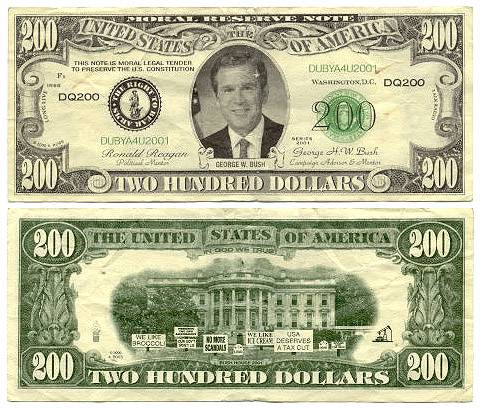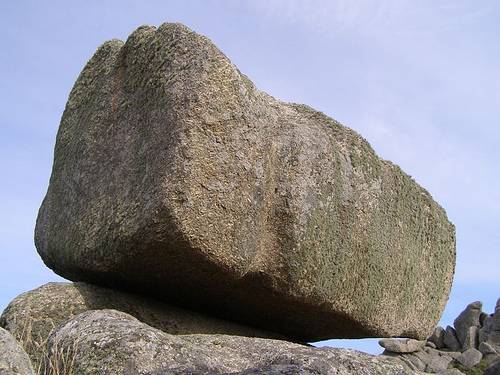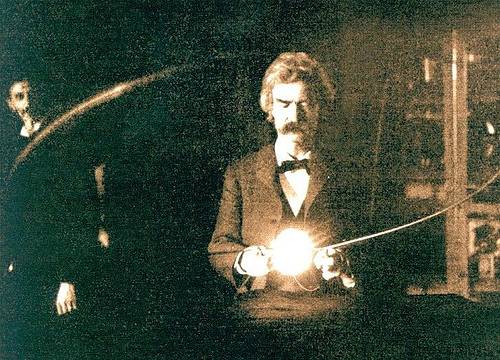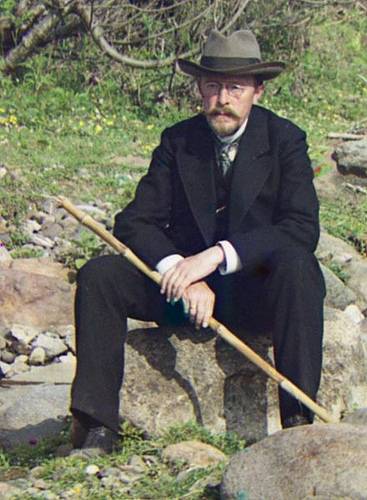
In 2001, a man bought a sundae at a Dairy Queen in Danville, Ky.
He paid with a $200 bill featuring a portrait of George W. Bush.
The cashier accepted it — and gave him $197.88 in change.

In 2001, a man bought a sundae at a Dairy Queen in Danville, Ky.
He paid with a $200 bill featuring a portrait of George W. Bush.
The cashier accepted it — and gave him $197.88 in change.
discalced
adj. without shoes
The Czech sentence Strč prst skrz krk (“stick finger through throat”) has no vowels — which makes it a notoriously difficult tongue-twister.
It’s so difficult, in fact, that Czechs challenge each other to say it — as a test for sobriety.

Never dare the British navy. Logan Rock, in Cornwall, had been famous as a “rocking stone” — the 80-ton boulder was “obsequious to the gentlest touch” but stood “as fixt as Snowdon,” in the words of poet William Mason.
Lt. Hugh Goldsmith apparently took that as a challenge, and in April 1824 he led the crew of HMS Nimble in tumbling the boulder from its clifftop perch.
His satisfaction was short-lived, however. Outraged at the loss of a tourist attraction, the local residents insisted that Goldsmith restore the stone, and six months later Logan Rock was hauled back to its perch, balanced — and chained in place.

Mark Twain in the laboratory of his friend, inventor Nikola Tesla, where in 1894 Twain briefly became a human light bulb:
In Fig. 13 a most curious and weird phenomenon is illustrated. A few years ago electricians would have considered it quite remarkable, if indeed they do not now. The observer holds a loop of bare wire in his hands. The currents induced in the loop by means of the “resonating” coil over which it is held, traverse the body of the observer, and at the same time, as they pass between his bare hands, they bring two or three lamps held there to bright incandescence. Strange as it may seem, these currents, of a voltage one or two hundred times as high as that employed in electrocution, do not inconvenience the experimenter in the slightest. The extremely high tension of the currents which Mr. Clemens is seen receiving prevents them from doing any harm to him.
— T.C. Martin, “Tesla’s Oscillator and Other Inventions,” Century Magazine, April 1895
If there are fake students in the world, surely too there are fake professors.
Josiah Stinkney Carberry has been “teaching” at Brown since 1929, when faculty prankster John Spaeth posted a false notice for a Carberry lecture on “Archaic Greek Architectural Revetments in Connection with Ionian Philology.”
Carberry never showed up, of course, but Spaeth gamely offered details about the missing professor’s life and studies, and now Carberry has become a campus tradition. He’s scheduled to lecture every Friday the 13th and February 29th (somehow never turning up), and students try to publish references to him in otherwise serious journals. Brown’s student newspaper also publishes letters from Carberry on April Fool’s Day.
One clue for those who don’t get the joke: The professor is celebrated for his work in “psychoceramics” — “the study of cracked pots.”

Russian chemist Sergei Mikhailovich Prokudin-Gorskii was taking color photographs as early as 1909.
He took this self-portrait in 1915, managing to look old-timey even without sepia.
“Aristotle maintained that women have fewer teeth than men; although he was twice married, it never occurred to him to verify this statement by examining his wives’ mouths.” — Bertrand Russell
Adam Rainer lived as both a dwarf and a giant. Born in 1899 in Austria, Rainer was 4 feet tall at age 18. Then, suddenly, he began to grow, stretching a full meter in the next 11 years to reach 7 feet 1.75 inches in 1931. The physical strain left him bedridden for life, but he kept growing. When he died in 1950 at age 51, Rainer had reached 7 feet 8 inches, having grown 44 inches during his adult years. Probably he had a pituitary tumor.